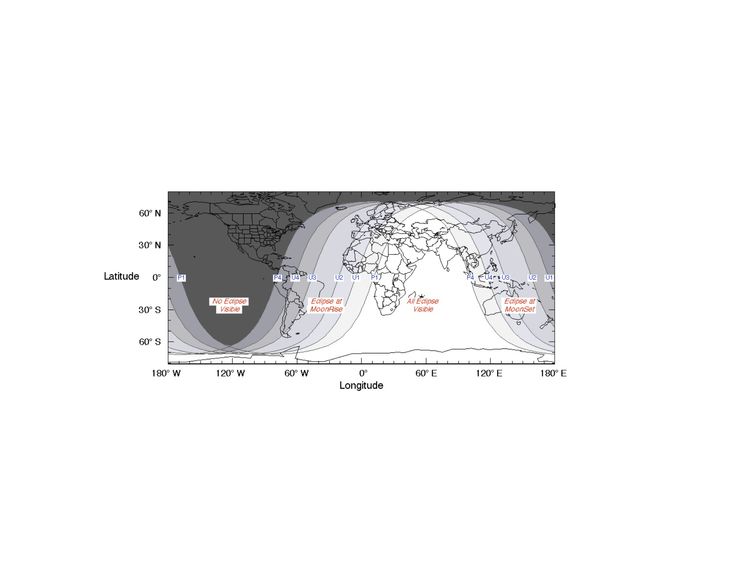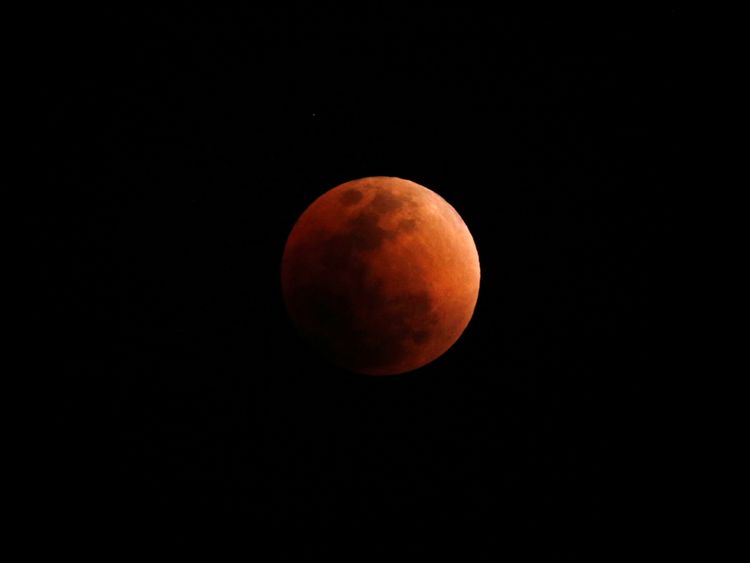A spectacular red moon will rise on Friday evening, marking the beginning of the longest total lunar eclipse that the Earth will see this century – and it will be visible in the UK.
:: What is a "blood moon"?
To give the blood moon its technical name, it is a lunar eclipse – caused by the Earth passing between the moon and the sun.
During a total eclipse, the Earth completely obscures sunlight from directly hitting the moon as the sun, the Earth and the moon will be in perfect alignment.
Only light that is refracted through Earth's atmosphere manages to reach the moon, with everything outside of the red wavelengths being scattered, leaving the moon looking blood red.
Because of the way the moon orbits the Earth, and because the Earth orbits the sun, there are always at least two lunar eclipses every year.
However, there are rarely total eclipses, when both the moon is full and the Earth completely blocks the sun.
:: When will the blood moon happen and where can I see it?
The Earth will pass between the sun and the moon for 103 minutes on Friday evening.
The eclipse will be visible in its entirety from the Indian Ocean and surrounding countries, from India to the Democratic Republic of the Congo.
It will be partially visible in the UK from 8.15pm on Friday evening – but rain clouds and thunderstorms could scupper skygazers' attempts to watch the celestial spectacular.
Warning it is difficult to be precise, Met Office spokesman Grahame Madge said: "There may be large areas where the sky is effectively covered by thunderclouds.
"They will move through reasonably quickly but if that coincides with the peak moment of the eclipse, they could obscure the moon."
By the time the blood moon is rising on Friday evening in the UK, it will have begun to pass out of Earth's shadow – although it will still remain quite red.

:: Is it safe to look at?
Unlike a solar eclipse, a lunar eclipse is quite safe to look at with the naked eye.
Although there are expected to be 230 lunar eclipses this century, Friday's will be the longest.

:: Is it interesting to scientists?
Lunar eclipses often throw up interesting data for astronomers.
When the Earth passes in front of the moon, it rapidly causes its surface temperature to drop – causing lunar rocks to suddenly freeze and crack, releasing gas.
More from Science & Tech
Astronomers' telescopes aimed at the blood moon have seen this happening, as well as another mysterious phenomenon – seemingly random spots of heat, often concentrated around craters.
Although these heat spots have been studied for more than half a century, scientists have not yet managed to establish what is producing this heat.
[contf] [contfnew] 
Sky News
[contfnewc] [contfnewc]






